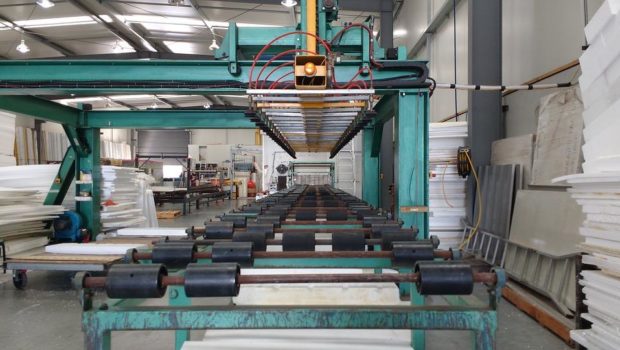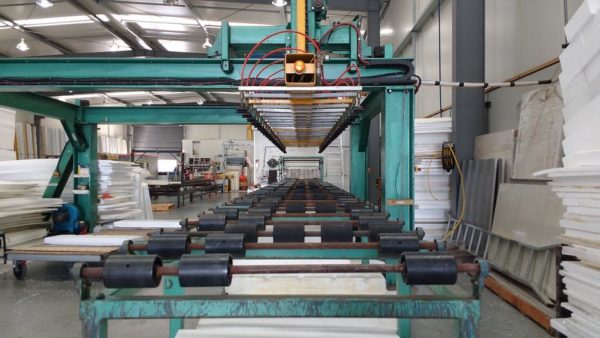Taking a Closer Look at Compliance in Custom Manufacturing
Maintaining compliance is critical to the success of custom manufacturing organizations. The consequences of not complying with industry standards and regulations include irrecoverable financial losses, strict legal action, costly operational downtime, and even product recalls. Any of these factors has the potential to put your company out of business.
Compliance usually boils down to keeping track of all business activities. However, with facilities dispersed across multiple locations, a large number of employees, several interdependent processes, a multitude of regulations, and decreased risk tolerance from regulators make it extremely difficult to comply with regulatory standards. So, how can you navigate your custom manufacturing business through the web of regulatory compliance?
Here are four tips that can aid custom manufacturing organizations to simplify and improve compliance.
1. Create an Effective Code of Conduct
One of the first things you will need is an efficient code of conduct that defines your organization’s core policies, work ethics, and expected employee behavior. You may need to develop a new one or enhance the existing code of conduct to add more value to your manufacturing processes.
Think of your code of conduct as the primary means of communication for your ethics and compliance strategy. You can make this code of conduct available to not only your employees, but also outside stakeholders including vendors, suppliers, and business partners.
To create a comprehensive code of conduct, you must include representatives from different arms of the organization when creating the draft. A good way to start will be to refer other companies’ codes of conduct as well as seek external counsel.
A few critical things you must include in the code are rules for maintaining records and documentation, confidentiality clauses, conflicts of interest, designing and engineering rules, proper use of company assets, workplace safety and harassment laws, and any other regulations that can apply to your organization.
To keep up with the ever-changing manufacturing regulations, make sure to review your code of conduct every couple of years. Also, after adding the necessary updates, make sure your employees understand how the code of conduct (and ensuing changes) applies.
2. Foster Informal Communication
Robust lines of communication allow you to successfully convey the right procedures to all parties involved in your custom manufacturing supply chain. The lack of communication often leads to errors, which in turn, results in compliance violations. However, the efficiency of your communication and information exchange relies on not only formal, but also informal communication channels.
Unfortunately, most manufacturing organizations overlook informal communication, which includes instant messaging, phone calls, emails, and in-person conversations during breaks and in hallways. While your Enterprise Resource Planning (ERP) software can take care of formal communication, it can’t address informal communication.
Keeping track of informal communication is difficult, especially in the case of hallway discussions. However, you can monitor casual work-related conversations taking place through a messaging platform.
You can instruct your employees to use a particular messaging platform such as Slack or Skype for everyday discussions. However, the platform must also be able to share relevant documents, emails, bill of materials, and other information among your employees. You will need to sync your formal as well as informal discussions to get a complete picture of compliance-related developments or issues.
3. Setting up a Hotline for Reporting Compliance Violations
Reporting compliance violations in time is as critical as keeping track of all work-related activities. This is where setting up an internal hotline or crisis management cell where people can report compliance violations comes in.
Perhaps the best benefit of setting up a compliance hotline is a substantially lower chance of whistle-blowing in your organization. You can douse the fire before it burns down the entire forest. But, make sure all concerned parties, including your average employees, senior management, suppliers, vendors, and business partners have access to this hotline or cell.
In this digital era, you can use a phone line or a web-based service, with the latter being the most prevalent. Keep the hotline anonymous and confidential as it will encourage employees to report potential or existing compliance violations without fear.
However, reporting is only the first half of the equation. Resolving the compliance-related issue before it blows out of proportion is the second and the most important half. You should have well-trained and experienced people on your payroll to follow-up on information provided via the hotline.
You will also need to have clear-cut protocols, rules, and guidelines that will help them act in such situations. Also, the hotline staff should maintain detailed records of each call and the subsequent action taken by the respective officers. These documentary proofs will come in handy if the compliance issue necessitates legal action.
4. Focus on Automating Compliance-Related Tasks
Staying on top of manufacturing compliance essentially means keeping track of the whos, the whats, and the whys of the entire manufacturing processes in real time. That’s why minimizing human intervention throughout the process makes sense.
In other words, you need to automate the compliance-related areas of your supply chain and manufacturing process. Automated compliance workflows bring benefits on many levels. For example, a material handling equipment manufacturer may need to get approvals for product designs, raw materials, and the manufacturing process from regulatory bodies.
Without automation, handling submissions and keeping track of necessary documentation can quickly turn into a nightmare. Automated workflows, however, allow you to fast-track the approval process by eliminating manual errors.
Similarly, automation can also streamline your internal audits or the ones performed by regulatory authorities. An automated workflow helps maintain a date-and-time-stamped audit trail. It also keeps all the critical information in a centralized database, minimizing the possibility of errors.
Lastly, automation allows you to share Engineering Change Notice (ECN) and drawing compliance documents in real time. Sharing, analyzing, and classifying ECNs using cloud-based or electronic means is more cost-effective, reliable, and time-saving.
Thus, all your departments including purchase, manufacturing, and design can avoid internal confusion. As a result, you don’t have to face the horrors of compliance violation, or worse, product recalls.
Parting Words
For a custom manufacturing organization, compliance is mostly about keeping track of their supply chain and manufacturing process. In today’s ever-demanding, customer-driven environment, compliance violations can cost your organizations dearly. Hopefully, these four pointers will help you analyze and simplify your manufacturing compliance. They will also provide cost savings and improve customer satisfaction. Start implementing them now.

















